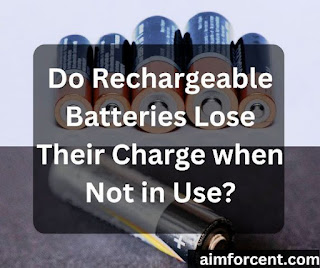How Many Times Can You Recharge a Lead Battery?
A lead battery can be recharged between 300 to 500 times before it needs to be replaced.
Lead-acid batteries are commonly used in a variety of applications, such as cars, boats, UPS systems, and solar power systems. Manufacturers prefer lead-acid batteries because of their longer lifespan than other types of batteries. If you want to know more about the recharge cycle of lead batteries, then please read this post because I am going to tell you about the factors and long-lasting performance of lead-acid batteries.
Why is Lead Acid Battery Popular in the Global Market?
A lead-acid battery is a type of rechargeable battery that uses a chemical reaction to produce electrical energy. It consists of lead plates submerged in an electrolyte solution of sulfuric acid and water. A chemical reaction occurs in which the lead plates react with the electrolyte to produce electrical energy. It offers better performance than other batteries in the market, not only in instant power generation (suitable for starting a car/motor) but also in the recharge cycle.
How Many Times Can a Lead Battery be Recharged?
A lead battery can be recharged between 300 to 500 times before it needs to be replaced. However, it depends on several factors, including the type of battery, the depth of discharge, and the charging method- I am going to discuss all of these today.
Please note that it is a general estimate, and the actual number of recharge cycles can vary depending on the factors mentioned above.
For example, if you cannot maintain a battery within a level of 40%-80%, then it may not last long. You should recharge the battery when it is partially discharged, do not wait for a low battery level signal.
Factors that Affect the Lifespan of a Lead Acid Battery
Now, without wasting time, let’s dive into the determining factors. Do not skip it! If you are using a lead acid battery, you must know the following factors and how they impact the battery performance:
Type of Battery
The lifespan of a lead-acid battery depends on the type of battery. There are two main types of lead-acid batteries: flooded and sealed.
Flooded batteries have removable caps that allow the user to add water to the battery cells when necessary.
Sealed batteries are maintenance-free and do not require the addition of water.
Flooded batteries tend to have a longer lifespan than sealed batteries because you can maintain them easily.
Sealed batteries, on the other hand, are less prone to leaks and spills. This type of sealed battery is mainly used when maintenance is difficult or impossible.
Depth of Discharge (DoD) Rate
The depth of discharge (DoD) refers to the amount of energy withdrawn from the battery before it is recharged. The deeper the discharge, the shorter the battery’s lifespan. For example, if a battery is regularly discharged to 50% of its capacity before being recharged, it will have a shorter lifespan than a battery that is only discharged to 20% of its capacity before being recharged.
Your Charging Method
The charging method also affects the lifespan of a lead battery. Overcharging or undercharging a battery can reduce its lifespan. Please remember that lead batteries are designed to be charged at a specific rate, and the use of a fast charge may damage the battery cells.
Environmental Conditions
Do you know the impact of environmental conditions? Temperature and humidity also affect the lifespan of a lead battery. High temperatures lead to battery degradation, while low temperatures also reduce the battery’s capacity.
I have covered the important aspects of lead-acid batteries. Do you want to learn more about it? Read my other post on rechargeable batteries.
How Many Hours Do Rechargeable Batteries Last Per Charge?
How Long Does It Take to Charge a 1500 mAh Battery?
Meet Rohan, a writer who loves to inspire and motivate others. He’s all about those feel-good quotes that can light up your day! When he’s not crafting words of encouragement, Rohan dives into the world of the latest technologies, exploring what’s new and exciting. But that’s not all—his heart beats for solar products, the kind that harness the power of the sun for a greener future. And guess what? He’s a total pet lover too! When he’s not busy writing, you’ll find Rohan surrounded by his furry friends, spreading joy and cuddles all around. Follow Rohan on Twitter and Facebook







